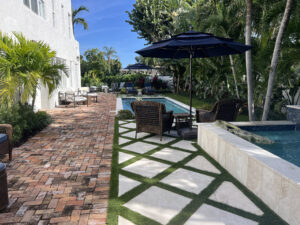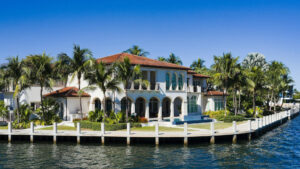A cool bath in the sunny weather is blissful. Are you preparing for backyard “swimming pool” fun as you plan your summer holidays in your favourite water body? A regular dip in the sparkling, clean waters can be amazingly refreshing. But wait a minute! What is that green bloom in the swimming pool? The green pool water may result from algae and can disrupt your swimming plans. You need to act quickly if your pool has algae.
You may have heard of phytoplankton or seaweed, and pond scum. These are aquatic organisms called algae, and they produce oxygen through photosynthesis, though they are different from land plant varieties. Pool owners worldwide complain of algae propagation! You can’t prevent algae from blooming, but you have to take steps so that it doesn’t spiral out of control and turn the water green.
What is Algae?
Algae are photosynthetic organisms and are said to be a part of the plant kingdom. These green-coloured algae can often be noticed sticking to the swimming pool’s walls, floor steps, and tiles. They rapidly grow and multiply. Pool algae are generally not harmful, but dangerous microorganisms such as E coli bacteria, Salmonella bacteria, and other parasites live in it.
How do algae enter the swimming pool?
Algae are found as spores and are present everywhere in the environment. But, they are rampant in leaves, soil and other organic debris. This organic matter slides and floats into the swimming pool with the wind. You may clean the pool with the net and remove the dead leaves, but the algae spores are left behind in the water and start propagating and thriving in the right conditions, contaminating the water.
But why does the pool get algae?
1. Algae thrive on bright sun rays. It starts to multiply and thrives under the light energy. As the swimming pool stands in the backyard, it gets plenty of sunlight, providing the algae with a perfect place to multiply, breed, and bloom. The sun’s rays fall on the pool waters, heating them mildly, giving the algae bloom the ideal place to multiply.
2. Algae are a plant that thrives in whatever is necessary to keep a plant alive: air, sun, water, and organic waste. Pool water balance is essential to get rid of algae. If Chlorination is ineffective, the growth of this plant can spiral out of control. The bright sun destroys the pool’s chlorine with ultraviolet rays. As the pool chlorination is disturbed and light energy spreads, the algae grow rapidly. According to the experts, inconsistent chlorine levels may be the reason for the propagation of swimming pool algae. They treat the water periodically and check it regularly for pool water chemistry balancing.
3. Poor water circulation is a significant reason behind a thriving algae bloom. The water must be pushed out of the pump quickly for proper circulation so there are no dead “moving water” spots in the swimming pools. Stagnant water is home to phosphates and algae spores.
4. Water filtration ensures the dead leaves, debris, and dirt doesn’t travel in the pool, transporting the algae spores from here to there. The phosphates and algae spores must be contained with proper acid wash treatment that ensures deep cleaning of the tiles, floor, and surfaces and balances the water chemicals.
5.Pools look messy and dirty with dark green or yellowish green waters and leave permanent stains. Nobody jumps into a pool with an unclean look thus pool stain removal becomes essential.
Pool algae thrive if there is faulty pool filtration and poor water circulation. To prevent the algae from flourishing, it’s crucial to keep the pool clean and operational so that there’s no hindrance to your water enjoyment. Regular maintenance is vital to keep an algae-free pool. This is why the pool contractors in West Palm Beach are very particular about pool maintenance, pool equipment repairs, water filtration and pool chlorination.
Algae may contribute mainly to the environment by producing oxygen, but they can hinder swimmers’ safety and thus have to be removed periodically. The aquatic organism can be challenging to remove because they attach themselves to textured and rough surfaces, spreading their roots deep into the tiles, cracks and grouting. It is difficult to remove them because they cling in patches to surfaces and must be treated.
Do not get carried away by the clean water in the swimming pool, even if it seems transparent and clear. Pool waters can be declared safe only if they are chemically balanced and have undergone regular pool phosphate treatment. The water must undergo acid wash treatment and maintain a pH between 7.2 and 7.6, and chlorine levels must be balanced according to authorities.



